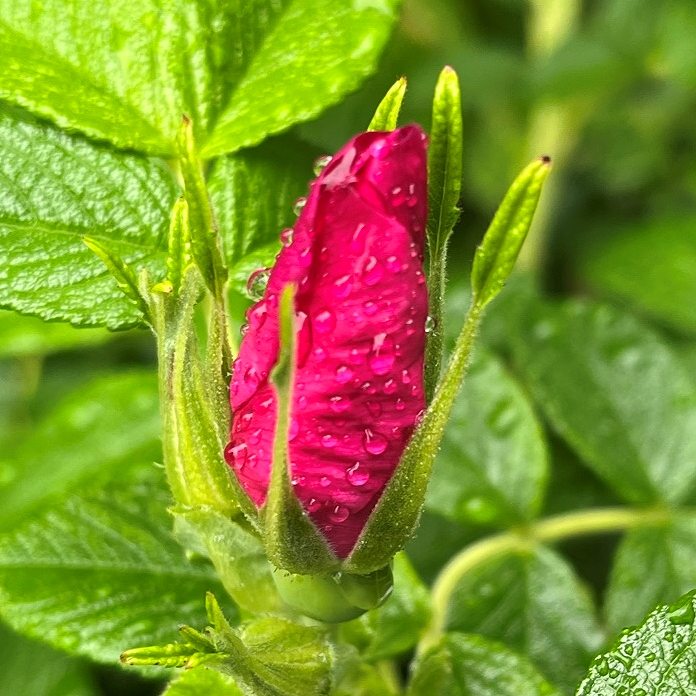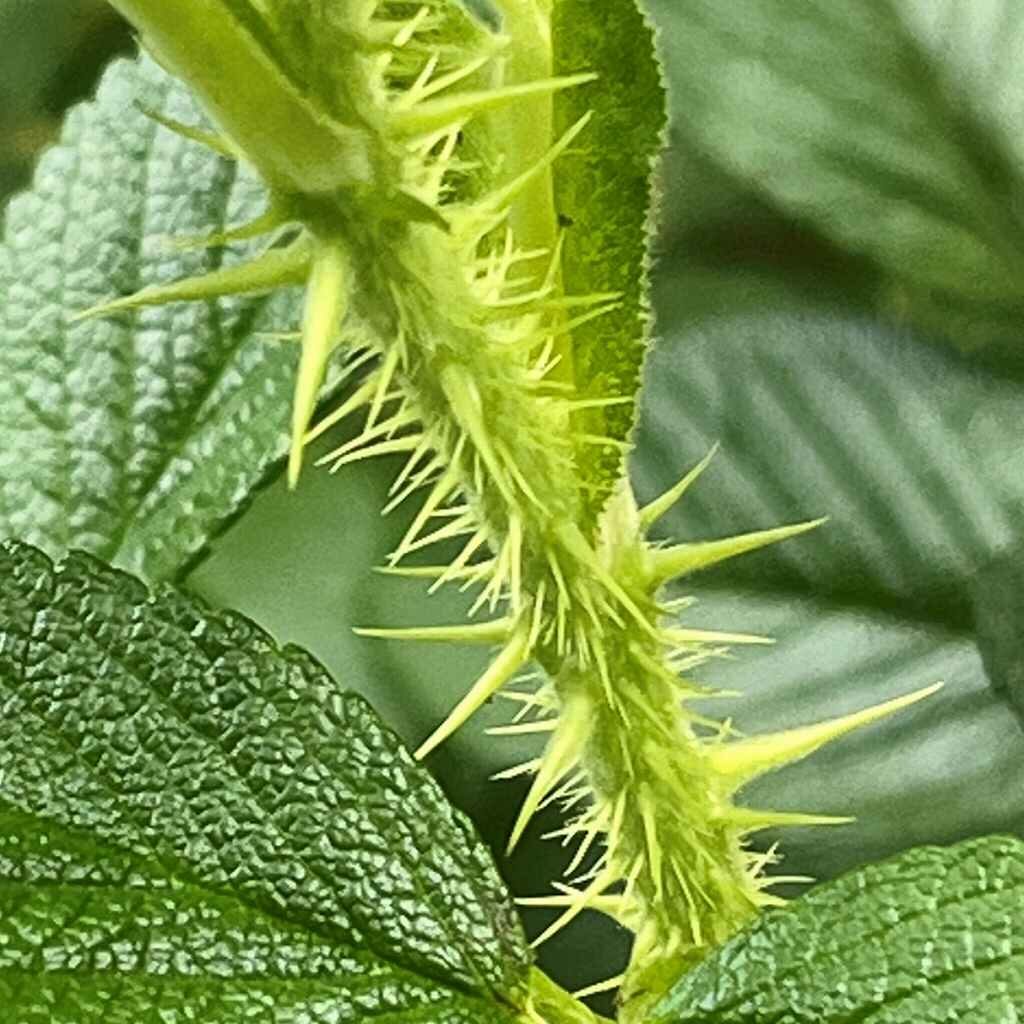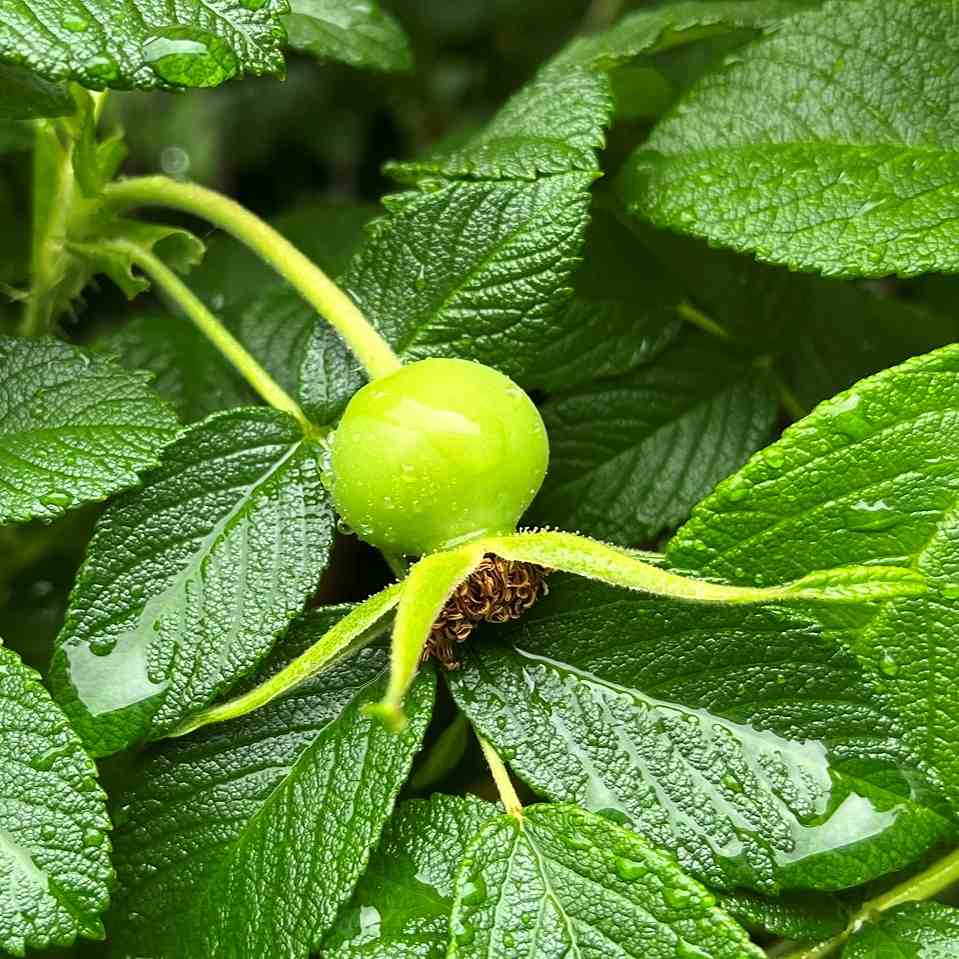ハマナスは冷たい潮風に強く、海沿いの砂地に自生。花が甘く香る日本在来の薔薇で、嗅ぐと血流を促し、血管を広げる作用があるそうです。
Ramanas rose is strong against cold sea breeze and grows naturally in the sandy areas along the sea. It is a Japanese native rose with a sweet scent of flowers, and when smelled, it improves blood flow and widens blood vessels.
【仮名】ハマナス, ハマナシ, マイカイ
【和名】浜茄子, 浜梨
【英名】Ramanas Rose, Rugosa Rose
【学名】Rosa rugosa
【誕生】06/ 05, 07/ 05, 09/ 01, 09/ 07
【開花】04, 05, 06, 07月
【花色】Pink, Purple






ハマナス
ハマナスの生態
ハマナスはバラ科の低木です。日本での分布は北海道から、日本海側が山陰地方、太平洋側が茨城県まで。国外では中国、朝鮮半島、樺太、千島列島です。冷たい潮風に強く、海岸沿いの砂地に自生。花が甘く香る日本在来の薔薇で、育種にも用いられます。花言葉は「旅の楽しさ」。
ハマナスの名前
ハマナスの名前の由来は海岸の砂浜に生えていて、熟した果実が梨のように甘酸っぱいからです。「浜梨」が転じてハマナスに。また、果実が小さな茄子のようなので「浜茄子」です。ラテン語の属名ロサは「薔薇」、種名ルゴザは「皺々」という意味。つまり、葉が皺々の薔薇です。
ハマナスの木
ハマナスの木は海岸で匍匐性、内陸で立性。よく分枝して叢生し、地下茎を伸ばして群生します。葉は小さな楕円形で厚く、縁がギザギザ。深い葉脈が網状に走って皺々に見えます。幹も枝も葉も短い毛に覆われ、大小のトゲが密生。これらに潮風の塩分を付着させ、塩害を防ぎます。
ハマナスの花
ハマナスの花は紅紫色の花弁が5枚。淡黄色の葯で花糸が密生しています。嗅ぐとゲラニオールなどの香気成分が延髄中枢を刺激。血流を促し、血管を広げる作用があるそうです。また、花蕾は漢方の生薬に。イライラを鎮めたり、気の流れや血の流れを良くする作用があるそうです。
ハマナスの果実
ハマナスは花後に丸い果実ができ、萼片をつけたまま赤く熟します。口に入れると、薄い甘味と酸味で種子も多く、美味ではないものの、ビタミンC、カロテン、ピロガロール、タンニンなど、美容や健康に役立つ成分を含有。生食のほか、ジャム、果実酒、お茶などに加工されます。
Ramanas Rose
Ramanas rose ecology
Ramanas rose is a shrub of the Rosaceae family. The distribution in Japan is from Hokkaido to the Sanin region on the Sea of Japan side and Ibaraki prefecture on the Pacific side. The distribution outside of Japan is China, the Korean Peninsula, Kabata, and the Chishima Islands. Strong against cold sea breeze and grows naturally in the sandy areas along the coast. A native Japanese rose with a sweet scent of flowers, it is also used for breeding. The flower language is “the fun of traveling.”
Ramanas rose name
The name Ramanas rose comes from the fact that it grows on the sandy beaches of the coast and the ripe fruits are sweet and sour like pears. “Hamanashi” turns into Hamanasu. Also, the fruit is like a small eggplant, so it is “Hama Nasu”. The Latin genus Rosa means “rose” and the species name Lugoza means “wrinkles”. In other words, the wrinkled leaves roses.
Ramanas rose tree
Ramanas rose trees are stubborn on the coast and standing inland. It branches well and grows in clusters, and the underground stems grow and grow in clusters. The leaves are small, oval and thick, with jagged edges. Deep leaf veins run like a net and look wrinkled. The trunk, branches and leaves are covered with short hair, and large and small thorns are densely grown. The salt of the sea breeze adheres to these to prevent salt damage.
Ramanas rose flower
Ramanas rose flowers have 5 red-purple petals. The pale yellow anthers are densely populated with filaments. When smelled, aroma components such as geraniol stimulate the spinal cord. It has the effect of improving blood flow and widening blood vessels. In addition, flower buds are used as a herbal medicine. It seems to have the effect of calming frustration and improving the flow of air and blood.
Ramanas rose fruit
Ramanas rose produces round fruits after flowering and ripens red with the stalks attached. When you put it in your mouth, it has a light sweetness and acidity, and there are many seeds. Although it is not delicious, it contains ingredients that are useful for beauty and health, such as vitamin C, carotene, pyrogallol, and tannin. In addition to raw food, it is processed into jam, fruit wine, tea, etc.


